An Ontological Retrospective: Another Look at Aristotle and Pirsig’s Metaphysics of Quality
Throughout this work we have emphasized the influence of Aristotle, perhaps more so than any other (Western) philosopher – even relative to his teacher Plato. His importance and relevance as it relates to the development and evolution of Western philosophy, which of course we cover in depth herein, stems not just from the sheer breadth and depth of his work, but also because to no small degree his work sits at the very heart of, and in many respects provides the foundation for, Western philosophy itself. For example, the very word we use to describe the philosophical discipline regarding the scope and boundary of knowledge, i.e. epistemology, derives from Aristotle – from the Greek epistêmê which is a term that runs through the very heart of Aristotle’s philosophical system. Epistēmē in turn comes to us from the Latin sciencia, which in turn of course is where our word Science comes from.
Aristotle’s philosophical system not only provided guidance and strategies for categorizing all the possible different domains of knowledge in and of themselves, but also included a very detailed and comprehensive system for identifying the requisite properties, or characteristics, of a thing that are both necessary and sufficient to provide the complete picture of what a thing truly is – a system of ontology in today’s philosophical parlance. This aspect of his philosophical system, sitting at the very heart one could argue, is his notion of being qua being, a phrase that is derived from the Greek óntōs, which of course is where modern (Western) philosophy derives the term ontology from to begin with. So in a very concrete way, lines can be drawn directly from many core Western philosophical constructs and terms right back to Aristotle – and Plato of course, who typically gets a little more credit than his student. [1] While perhaps this may seem like a bit of an exaggeration, with Aristotle having lived so long ago and he having lived in an era where so little was known about how the world actually works, from the very beginning of rational (literary) discourse really, nonetheless in looking at Aristotle’s works, and again his epistemological and ontological frameworks in particular, one cannot discount not just his lasting influence on Western philosophy, but also the extraordinary persistence of his intellectual framework’s applicability and relevance – even today.
As we’ve discussed before, Aristotle divided all knowledge – or again Science, into three fundamental and exhaustive branches:
- the theoretical: knowledge for knowledge’s sake, which included, according to Aristotle, the fields of mathematics, physics or natural philosophy, and first philosophy or metaphysics,
- the practical: which concerns conduct and goodness in action at the individual and socio-political level, i.e. ethics and socio-political philosophy and theory, and
- the productive: which aims at the production of useful or beautiful objects and includes such disciplines as the arts – e.g. music, theater, etc. – and craftsmanship such as ship building or the construction of homes or tools, as well as the “art” of rhetoric as well.
With Aristotle then, we find not only the origins of the word “science”, but also the intellectual framework, approach and terminology, within which it’s study in the aggregate was to be approached, again epistemology, one of the cornerstone disciplines of modern Philosophy. For philosophy, philosophia in the Greek, in all its forms throughout antiquity in the Mediterranean, even after the period of Roman influence, was for the most part structured around the framework, and terminology, that was used by Aristotle, despite the significant influence Plato’s works had on the Hellenic philosophical tradition. Furthermore, it is primarily from this (Hellenic) philosophical tradition – in terms of approach, scope, methodology and terminology – that our modern University system in the West is sourced, referred to as academia, sometimes even as simply the “Academy”, which of course also traces its source back to the Hellenic philosophical tradition, derived directly from the name of the most famous philosophical school in antiquity, namely the Academy, which was founded by Plato circa 387 BCE, some three years after Aristotle was born. To say that the basic underlying intellectual framework of the West is primarily Hellenic then, despite the 2500 years or so that have gone by since it was first established – by Plato and Aristotle primarily – would in no way be overemphasizing the point. Without the Hellenic philosophical tradition, or even if it had taken a different form or used a different language or even a different set of words to describe certain key terms, our intellectual landscape in the West would be almost unrecognizable.
Having said that however, it is undoubtedly the theoretical branch of knowledge for which Aristotle is best known – what included both his physics and metaphysics, Aristotle’s first philosophy, which in turn subsumes what we today call theology. In antiquity however, the existence of God – or gods as the case may be – was considered to be so self-evident, such an elementary part of reality and the universe, that a separate discipline or branch of knowledge for its study was not warranted or even considered really. As such it is in Aristotle’s Metaphysics, as distinguished from Physics proper, from which we source Aristotle’s theology primarily, with theos, or God, being represented as the rational deduction of the so-called first, or unmoved, mover. Aristotle’s metaphysics in turn is probably best characterized by his epistemology, which as outlined above rests quite squarely on this doctrine of the four causes. Aristotle’s theory of causality then, when supplemented with his concept of being qua being which underpins his metaphysics and his ontology – in fact not only defines his ontology but establishes the terminology for the discipline itself, i.e. óntōs from which “being” comes from in being qua being – when combined with his notion of epistêmê in terms of not just definition but in terms of its boundaries and scope, effectively comes together to make up Aristotle’s epistemology, establishing the intellectual framework and language more or less that seeded modern Science, some two thousand years before Newton. One could say even that ontology as a discipline begins with Aristotle, although antecedents lay with Plato no doubt. For it is being that Aristotle is most concerned with throughout his Metaphysics, which in turn inform his category theory and establish the boundaries of existence, which in turn come to define knowledge.
However, one could make a case though, that with respect to theology at least, we have a very solid metaphysical foundation established with Aristotle with the notion of God, i.e. theos, firmly rooted in not only his ontology as it were, but his epistemology as well – rooted in the very foundations of his notion of being qua being as a logical deduction as it were to his metaphysics of change. This is undoubtedly what attracted the Muslim falṣafa to his work, with Aristotle’s first mover fitting quite nicely into their monistic theological narrative, the basis for the break with Christianity to a large degree, whose doctrine of the Trinity and their notion of hypostatic union of God with Jesus they viewed as being inconsistent with monism as an abstract theological principle which they held was more accurately depicted in Muḥammad’s theology – as depicted in the Qurʾān which forms the basis of Islam of course. Plato’s theology, in contrast, shows much more dualistic tendencies, as we see in the Timaeus for example, with Being and Becoming being presented as the two primordial, eternally existent, intellectual first principles – i.e. arche – upon which his metaphysics (if we may call it that) is constructed primarily. And while his Demiurge and World Soul in the Timaeus provide the theological and metaphysical framework for the Neo-Platonic Divine Intellect, or Nous, the Neo-Platonists clearly preferred Plato in a more diluted and synthetic form as his theology came to be understood in Neo-Platonism to which again Arabic falṣafa clearly felt a great affinity.[2]
Upon reflection however, one could argue that we can find an intellectual latch as it were to the mystic experience in Aristotle’s notion of being qua being, as the underlying potentiality (pun intended) of being in and of itself – not as a descriptive metaphysical principle which is more or less what being qua being denotes, but as a direct experience of being in its actualized form as it were – in a more Platonic theological sense as Being – although non-differentiated or qualified with any of the basic metaphysical categories for example that would be necessary conditions of any more material (or to use Aristotle’s terminology substantial) being or entity. This no doubt is how the Neo-Platonists conceived of their concept of the One, which provided the ontological and metaphysical primordial construct from which the universe itself emerged (seen as a fundamentally intellectual organism in the Neo-Platonic tradition) as well as provided them with a mystical grounding as well – as a principle that not only could be, and should be, conceptualized, but one in fact that can be, and again should be, experienced.
This notion of the mystic experience – the experience of the very ground of being itself (what in the Upanishads is referred to as Satcitānanda) is not really alluded to specifically in either the works of Aristotle or Plato, however we do nonetheless find a fairly sophisticated and well thought out conception of God, or theos, as an extension to their respective metaphysics – even if Plato’s account of him (the Demiurge, or divine craftsman, in the Timaeus) is presented as more of a myth than a rational explanation necessarily, what he refers to specifically as a “likely story”, in contrast to the more rational conception of God that we find in Aristotle who argues for the existence of a primordial principle, an unmoved or first mover, which he equates with God, i.e. theos as a rational deduction. As he describes in Metaphysics, the unmoved mover is the penultimate requisite rational deduction as it were, a necessary condition of existence itself. Although interestingly, in both the cosmogonic accounts of Plato and Aristotle, despite their fundamental differences in style and determinative strategy, it can be said that God – however one arrives to the requisite conclusion of his existence as it were – is nonetheless motivated by Love, i.e. Eros, in order to not just bring about the creation of the universe, to set it into motion as it were according to Aristotle, but also in its preservation as well, as we see reflected in the notion of emanation which rests at the heart of Neo-Platonic theology, a later development but still fundamentally Platonic.
With respect to identifying a different ontological and epistemological model in order to support a more profound and robust understanding of the universe within which we live, while Aristotle’s philosophy is certainly attractive in many ways, some might have a problem with leaning too much on a system of philosophy that is so old and outdated as it were, and perhaps even in its complexity. And even despite its epistemological flexibility, Aristotle doesn’t weigh in on the mystical experience at all really, even Plato only glances on the subject here or there. But clearly there is a mystical thread that runs through the Hellenic philosophical tradition though, as it shows itself with the Gnostics especially and with the Neo-Platonists a little less directly perhaps. But again, we do not find this in Aristotle’s work necessarily, relegating the mystic wisdom to the realm beyond reason, even if unintentionally. While the author doesn’t necessarily agree with this criticism with respect to the outdated and complex nature of Aristotle’s epistemological and ontological framework in light of a modern adaptation and utilization, we do however see the value in offering at least one other metaphysical framework as an alternative to the prevailing Western worldview of objective realism, or (following Pirsig) subject-object metaphysics – given its inherent limitations that we have explored at length in this work. And that is Pirsig’s Metaphysics of Quality, which although has been dealt with in some detail in prior Chapters in this work, is worth nonetheless revisiting within the context of summarizing this intellectual journey so to speak as we look for a more modern ontological framework to replace the prevailing Western worldview given again its inherent limitations.[3]
Pirsig’s first work was Zen and the Art of Motorcycle Maintenance: An Inquiry into Values. The book, from a philosophical point of view, is an excursion into the reasons, and ultimately a search for a solution, for what he considers to be a fundamental lack of what he refers to as value in the West. The story that he narrates in this book, which is one of non-fiction essentially, follows his journey across the country on a motorcycle with his son along with a couple that he is friends with. A contrast is drawn throughout between his approach to maintaining his motorcycle, one that is characterized by Quality (as he defines it toward the end of the book), and the approach his friend takes to maintaining his motorcycle, which is one of carelessness (in Pirsig’s terminology Valuelessness) more or less.[4] We are told towards the end of the book that the impetus for the book is based upon an “epiphany”, or “mushroom” of ideas which came to Pirsig, or the figure of Phaedrus in the book, which originated from a seed thought around the basic intuitive, i.e. non-classical or non-empirical, nature of hypotheses in and of themselves, despite their importance to the Science, a purely empirical enterprise – a quandary for sure. This epiphany in turn led him to question the very foundations of (classically Western) Science, which of course rests squarely on the ability to conceive of a hypothesis, a fundamentally non-Scientific construct in and of itself, which is then tested for “validity” which in turn one way or another moves Science forward, i.e. the very essence of the notion of scientific progress.
What Pirsig found, or what he “realized”, was that at the very foundation of scientific empiricism sat a non-classical, non-Western (quite Eastern in fact) notion of what can perhaps be best described using the terminology of this work as divination, an intuitive conception of a given hypothesis that somehow distinguishes itself, or is distinguished or divined as the case may be, out of the potentially infinite number of hypotheses that could potentially form the basis, or starting point, of a given scientific experiment. This “intuitive” or “non-scientific” nature of hypothesis divination is illustrated by the Newton and the apple phenomenon. Newton – the father of Classical Mechanics for which the discipline is named in fact, i.e. Newtonian Mechanics – in the tale that surrounds his discovery of gravity, is grounded in a fundamentally intuitive epiphany of understanding that quite literally “fell” out of the tree in front of him.
According to Pirsig, this notion of the intuitive, divinatory quality of hypotheses creation just sort of sits there outside of Physics, outside of what he refers to as the citadel of science, as a phenomenon that just “occurred” and yet at the same time was integral to the process and discipline of Science itself. For some reason, before Pirsig at least, no one considered that this was odd and somehow contradictory, or that it reflected a limitation or flaw in the underlying scientific empiricist model and conception of the Western intellectual landscape, that the source of the very basis of Science itself, sat outside the intellectual model that it clearly was such an integral and essential part of. Parallel to this journey across the country on motorcycles, Pirsig intersperses philosophology – a term that Pirsig uses in his second book Lila: An Inquiry Into Morals to describe his inquiry and study of philosophy itself, i.e. literally “the study of” philosophy – with the story of a character who he introduces as Phaedrus[5], a name that is taken from Plato’s Dialogue of the same name, and who as the reader sees over the course of the narrative is actually an earlier version of Pirsig himself. In this context, Pirsig sets the stage for the ultimate problem he is trying to get to the bottom of, one which he again he perceives to fall along the Eastern and Western worldview divide as well, and one which gets to the very root of what he perceives to be a fundamental drawback, and limitation, of Western empiricism which is reflective more or less of the Western worldview, at least as how it is conceived by Pirsig – a worldview which he believes sits at the very heart of the problem of the lack of what he refers to as value in the West – hence the subtitle of the work, i.e. An Inquiry into Values.
One the one hand, his friends’ approach and mindset with respect to their motorcycle is purely “objective”, or again “utilitarian” (i.e. “Western”) and they see no need to look after their motorcycle as they would a pet or a child for example. On the other hand, Pirsig critiques this mindset throughout and in contrast approaches the maintenance of his motorcycle from a more “holistic” or “integral” vantagepoint (i.e. “Eastern”) in which the motorcycle is understood not just as an object that serves a particular function, but also as an extension of himself and to which he maintains a “relationship” that he strives to be “harmonious” with and as such should be looked after and nourished in a sense, just as one would approach a plant for example. Ultimately it is Pirsig’s principle of Quality from which this perspective is derived, but this term is really only fully appreciated and defined toward the end of the book. This dichotomy of approach to maintaining this “thing”, i.e. the motorcycle, becomes the very catalyst for what Pirsig sees as the basic problem underlying the Western (vs. Eastern again) worldview and is reflective of the very basic lack of what he calls Value in Western society. This dichotomy fits quite well with one of the major themes of this work, i.e. that the “Western” fundamental conception of reality, objective realism, lacks something very basic and fundamental regarding the true nature, or description, of reality, a worldview that is juxtaposed with the “Eastern”, or holistic, worldview, which to a certain degree, just like Pirsig’s Quality, becomes almost undefinable in its penultimate, purest, form. Hence Pirsig’s search for a model which captures both and “bridges the gap” as it were, which ultimately runs directly analogous with one of the major themes of this work – although we draw the lines around mysticism, epistemology and ontology primarily whereas Pirsig draws them around metaphysics, value and morality essentially. [6]
Pirsig ends up deciding on the word Quality, to crystalize this distinction in mindset, from which his Metaphysic of Quality is derived of course. The definition Pirsig gives for Quality, one that he presents as he is pressed by his colleagues to give one (he was a teacher of Rhetoric at the time at the University of Bozeman when his initial seed thoughts related to his so-called epiphany germinated):
Any philosophic explanation of Quality is going to be both false and true precisely because it is a philosophic explanation. The process of philosophic explanation is an analytic process, a process of breaking something down into subjects and predicates. What I mean (and everybody else means) by the word quality cannot be broken down into subjects and predicates. This is not because Quality is so mysterious but because Quality is so simple, immediate and direct.
“The easiest intellectual analogue of pure Quality that people in our environment [academia] can understand is that ‘Quality is the response of an organism to its environment’ [he used this example because his chief questioners seemed to see things in terms of stimulus-response behavior theory]. An amoeba, placed on a plate of water with a drip of dilute sulfuric acid placed nearby, will pull away from the acid (I think). If it could speak, the amoeba, without knowing anything about sulfuric acid, could say ‘This environment has poor quality’. If it had a nervous system it would act in a much more complex way to overcome the poor quality of the environment. It would seek analogues, that is, images and symbols from its previous experience, to define the unpleasant nature of its new environment and thus ‘understand’ it.[7]
So here we find that Quality then to Pirsig, is an undefinable “thing”, and yet at the same time, is a very “real” thing. This notion of Quality can be understood as aligning, epistemologically at least, with Plato’s theory of forms, as reflected in the idea that for example that it is self-evident that pure beauty, virtue, or goodness or badness (or even “chairness” or “tableness”) are in fact “real” things, even if they defy explanation or definition and even if they do not necessarily exist in the “objective” or “empirical” sense. It is from this notion of the inherent reality or these forms or ideas in fact, that not only provide the metaphysical foundations of Plato’s idealism, but also provide the foundations of Plato’s epistemology – his theory of knowledge – as knowledge to Plato, as outlined in the Meno and the Phaedo but also to a lesser extent in the Phaedrus, is viewed as a form of recollection, or anamnesis, which arises upon the contemplation or understanding of any thought, idea or object. In fact, at one point Pirsig even maps the notion of Quality to the Dao, running through the initial verses of the Dàodé Jīng and replacing the word Dao with either “Romantic Quality”, “Classic Quality”, or simply Quality at various points, noting the quite perfect fit that his Metaphysics of Quality has with the fairly opaque notion of the Dao which rests at the very heart of the Chinese philosophical tradition.[8]
And from this initial notion, and associative relevance and importance, of Quality, Pirsig derives his Metaphysics of Quality, which in its original conception in Zen and the Art of Motorcycle Maintenance is a trinity of sorts – with Quality as the basic and ontological primordial concept sitting at the top of the metaphysical hierarchy as it were, and under it resting two different aspects, or types, of Quality – the first is what he refers to as Romantic Quality, or preintellectual reality, which is “non-intellectual”, or “right brained” as he puts it. Romantic Quality includes the domains of the arts for example and is the domain from which direct experience of things such as beauty, virtue or justice emanate or originate from. The second aspect of this Quality is what he calls Classic Quality which corresponds to what he calls intellectual reality. It is out of Classic Quality for example from which “Western” analytical models emerge and under which he delineates two distinct categories – one which he calls subjective reality, or mind, and another which he refers to as objective reality, or matter.[9]
After much of Pirsig’s philosophology is complete in Zen and the Art of Motorcycle Maintenance, and after he has effectively described Metaphysics of Quality as an alternative model, i.e. metaphysics, that can (and in his view of course, should) supplant subject-object metaphysics as the predominant intellectual model in the West such that values, or value, can become an integral and fully synthesized aspect of a more expanded description of reality rather than as an entity, a concept, that sits outside of the metaphysical model as it were, i.e. subject-object metaphysics, he follows the journey of this figure Phaedrus toward his ultimate demise. As Phaedrus struggles to articulate and explain Quality to his peers in academia – defending his Metaphysics of Quality against various critics from the Academy – he is confronted with the difficulty of trying to distinguish between, and establish the relative importance of, rhetoric versus dialectic, in the context of the way these two terms and ideas are presented in Plato’s Phaedrus as reflective of two very important philosophical and intellectual constructs in Hellenic philosophy. As he deeply contemplates the problem, he ends up quite literally losing his mind in some sort of wave of thought, ending up completely catatonic in a hotel room for several days without even the ability to control his bodily functions – after which perhaps not surprisingly, he is institutionalized and, as we find out later in his second book, ultimately subjected to electroshock therapy such that his “sanity” can be restored. [10]
Pirsig’s journey then in Zen and the Art of Motorcycle Maintenance, both intellectually as well as physically, ends up culminating in the creation of the Metaphysics of Quality – as it is initially conceived as a solution to his problem of the lack of values in modern Western society – as an alternative “way” of looking at the world, an alternative perspective or worldview, a metaphysics as it were, that integrated this notion of Quality directly into the intellectual paradigm as opposed to it resting “squarely” outside of it, thereby supporting and reinforcing this notion of value as an integral part of the world. But he’s not done yet as it turns out, and despite the success of Zen and the Art of Motorcycle Maintenance as a “cult classic”, it is some time before he revisits the topic again in his second work, entitled Lila: An Inquiry into Morals first published in 1991. With Lila, and its subtitle as “An Inquiry into Morals”, Pirsig looks to further elaborate upon his Metaphysics of Quality as a practical, intellectual, tool and expand it to encompass not just values, but arguably the broader notion of morality. In Lila, Pirsig narrates his journey on a boat down the Hudson River where he picks up a travel companion, a woman named Lila who is of what we might call “loose” moral character.
As he looks to defend his notion of Quality, and in turn attempt to answer the question as to whether or not Lila has Quality, he is thrust into the world of morality and ethics generally speaking. In doing so, he morphs his Quality that he defined in Zen and the Art of Motorcycle Maintenance from Romantic and Classic into static (lower case) and Dynamic Quality. In this new model, Dynamic Quality is the very ground of existence, and again represents a precognitive state of awareness before any “intellectualizing” or any sort of intellectual map of the world is applied to an “experience”. Static Quality on the other hand, represents the basic underlying intellectual patterns that ground the world and experience into a rational, organized (set of) framework(s) that allow us to subsist and evolve as individuals and as a society as a whole. These static patterns, static domains of Quality as it were, he sees as spread across four, dependent and hierarchical domains – inorganic, biological, social and intellectual. They all build off each other and to a certain extent feed off, or build off, of the lower forms.
He provides the analogy of a computer system to explain how these four domains of static Quality work together and coexist, where at the lowest level you have electrical circuitry, where 0s and 1s effectively tell the computer “what to do”, and at a level just higher than this you have the mother board where basic machine level instructions, what used to be referred to as assembly language, is compiled and given to the lower level electrical circuitry from the higher level language that sat above it. At this higher level, was the operating system, the software that controls the hardware end to end and sits behind all of the software programs that run on the computer, translating these higher-level instructions from these programs into machine code which is then translated into electrical circuitry (1s and 0s) which tell the machine “wat to do”. In this model at the highest level, we have programs and software, which interfaces at the operating system level, and provide the actual intelligence of the machine. It is the software and programs that we interface with that give the machine practical value, but this is only possible because it builds off of, and out of, the lower level interfaces and modules that do all the translational, lower level work, i.e. the static patterns of Quality.[11]
Static Quality works in the same way, where these inorganic domains provide the ground of existence and the intellectual and foundational building blocks for the organic world, and the organic world provides the framework for the social, and the social provides the groundwork for the intellectual. But in his model, “higher” levels of static patterns, i.e. higher levels of static Quality, represent more evolved and more mature, more moral states of being, and as such represent greater, or more significant and higher patterns of value. This is why for example that a Doctor is morally obligated to kill germs or bacteria that threaten the life of a human being, because we value the human organism more so than we do the bacteria that is threatening its existence.[12] The same can be said of social patterns Quality, individual lives can be – and in his model should be – sacrificed for the good of a society or nation. And in turn a society should be sacrificed for the good of intellectual principles, which of course provides the justification, the rational justification, for revolutions and in particular for the migration toward more democratic forms of government across the globe in the last century or so.
Pirsig believes this intellectual framework of coexistent, somewhat mutually exclusive but at the same time exhaustive, categorization of static Quality patterns, or elements of Being as it were in the Platonic sense, answers and solves many modern intellectual dilemmas – like mind-body dualism, Fate vs Free Will, and others.[13] The entire framework he creates is driven by values, or at the highest level of his metaphysics, Quality – i.e. what is of the highest value, that which is most “good”, is that which survives, but the alignment the system provides, quite elegantly we might point out, for making moral judgments is extraordinary to say the least. Perhaps the most poignant example he gives of how this intellectual framework is different from, and more powerful than, subject-object metaphysics is that it helps to explains Darwin’s notion of survival of the fittest, what has come to be known as natural selection. To Pirsig, this mechanism defies explanation to a large extent – what is it that makes something more “fit” to survive? In his model however, the more advanced version of Metaphysics of Quality (Metaphysics of Quality 2.0 we might call it) he finds a much more rational and elegant explanation. As organisms evolve, using Dynamic Quality as the driving force primarily, that which is the “life force” behind mutation itself at the biological and genetic level, give rise to these genetic mutations, fundamentally Dynamic Quality driven “events” as it were, which then are integrated into the biological static Quality patterns of existence which in turn provide the stability and structure, the underlying static pattern of order, within which these various “mutations” will either drive and evolve the species forward, or they will be discarded as non-useful.
In Pirsig’s model – and this is where we find ourselves back in Hellenic philosophical land (again) – it is the good mutations that survive or persist in that they facilitate the survival of the species, facilitate reproduction in some way, whilst the bad mutations ones are rejected by the relevant static order pattern. And while Pirsig does not point it out as such, this is almost eerily akin to Plato’s notion of the Good, as the basic principle which underpins and form, the basic building block of matter – in Plato’s idealistic metaphysics at least. As such, Pirsig’s Metaphysics of Quality 2.0 as it has evolved in Lila, is a moral framework as well, moving beyond values as an organizing principle or theme as it were, as powerful and strong a metaphysical concept as that is in and of itself, into the domain of morality and ethics, almost by accident, or perhaps better put as a natural byproduct of, an extension, of the notion of value as he understands it. For morality is most certainly a value based framework – at least from a metaphysical point of view – just one that is conditioned, or structured, along specific socio-political, and perhaps even religious (and again ultimately metaphysical, as in Kant’s metaphysics of morals for example) grounds.
In other words, to progress at any level of the static Quality continuum is a value judgment in an absolutely moral sense. So the idea of morality, which is representative of a fundamentally static Quality pattern at the biological (human) level of existence, can now be extended to all forms of life – as the ultimate driving force of natural selection in and of itself. Furthermore, these value judgments can then be applied toward not just biological static Quality patterns, but also can be understood as applying to inorganic patterns as well, to social and political frameworks and even to intellectual ones, with the whole continuum of static Quality patterns resting and building off of each other in a modular way (again the computer system analogy) but all governed by the same principle – not just value or Quality, but morality, our Platonic Good or Best.[14]
Now that he has fully explored the Metaphysics of Quality 2.0 in many respects, that the notion of Dynamic Quality and static Quality have been fully defined and explained, and the latent power of the model, the new metaphysics as it were, is understood in particular with reference to, and is illustrated by, its extension from not just values, but also morality, he then goes on to attempt to provide some sort of reference point to his notion of Quality, what is it “like”, to further illustrate its qualities and characteristics even if it lacks definition. And it is here where Pirsig’s work ties directly into this work in terms of not just intent, and intellectual progression, but also somewhat unintentionally and coincidentally, in conceptual crystallization or elucidation as well – i.e. he seems to end up at the same place we do, although his journey is from the top down whereas ours here is from the bottom up you might say.
Pirsig equates his notion of Quality with arête, a word that is typically translated as virtue and represents one of the very fundamental principles in the Hellenic philosophical tradition with respect to not only ethics and morality, but also socio-political philosophy as well – that is to say, a society and/or nation built on virtue, or excellence, at the individual as well as social level. He then follows this word back etymologically along the Indo-European philological path to Sanskrit, the oldest of the Indo-European languages that runs closest to its theoretical parent Proto-Indo-European, and lands on the principle – again primarily using etymology and philology as his guide – Ṛta, which means “cosmic order” or “truth” which is one of the very fundamental and grounding principles of Upanishadic philosophy. Ṛta is a somewhat more generic and more primordial theological principle than the Greek arête however, evolving in the later more mature Indian philosophical tradition into the notion of dharma, which of course is a key principle in both Buddhism as well as traditional Hinduism, and carries significant moral and ethical connotations with it – along with, and quite related to, its connotation of the penultimate cosmic ordering, or balancing, principle. And this is precisely what Pirsig is getting at with his concept of Quality – his etymological journey that starts with arête that takes him through Ṛta to dharma roots his Quality right at the very heart of the Indo-European (intellectual) family tree as it were. He had already provided his direct analogy of Quality with Dao in his first work[15], establishing the grounds of the principle in the Chinese philosophical tradition, and now he grounds the principle in the Western philosophical (really Indo-European) tradition as well, having followed philological and etymological lines, through arête to Ṛta.
But given the scope of this work, we can extend Pirsig’s metaphysical, really philological argument, not just to the Indo-European theo-philosophical landscape, but to the Egyptian, Persian/Indo-Iranian, and again even the Chinese, theo-philosophical landscape as well. We have the Ma’at of the Egyptians for example, which equates to not just the arête of the Hellenic philosophical tradition, but to Nómos as well which is a metaphysical offshoot of the Greek god Chronos, or Time, in their mythological tradition which is outlined most eloquently by our beloved Hesiod. Nómos in turn has a direct corollary in the Jewish Wisdom tradition as the Torah, which is not only the name given to their scripture, but also is more generally translated as “Law”, aligning again very neatly to the Indian philosophical Ṛta. We even find a corollary in the ancient Indo-Iranian mythos, where we find the Zoroastrian Aša which to the ancient Persians signified universal, or cosmic (and essentially theological) law as well. And as we have already mentioned, we see the same principle in ancient Chinese philosophy as Dao, which if we reach further back into ancient Chinese mythos corresponds more or less to Tiān, from which for example we find the idea of the so-called “Will of Heaven”, or “Mandate of Heaven” – Tiānmìng – which underpins not only Chinese philosophy, but also underpins their political establishment and authority for pretty much the entire duration of Chinese history as well.
All of these ancient cultures in fact had a notion of cosmic or heavenly order that not only provided the basic grounding principles and structure which brought the universe into existence, as reflected in the cosmogonies and theogonies of all of these ancient civilizations, but also provided the rational justification for moral order on the human plane of existence – the feather of judgment in the Egyptian mythos which determines the path of the Soul after death or the Judeo-Christian concept of judgment which rests on this idea of morality, or justice (philosophically speaking ethics) which is applied to the Soul to determine its final resting place upon death – the scale of justice as it were. Once we follow Pirsig’s intellectual parallel down through the chain of intellectual historical and evolutionary existence to the root of Indo-European culture, we – through this work – can find it across all ancient civilizations in Eurasia as a, if not the, governing principle of the universe, a principle which essentially provides the intellectual lever in the West for the pivot from mythos to Logos, the latter principle which is equated to the very rational, and divine or cosmic, basis, upon which all of the ancient theo-philosophical systems more or less rest as they evolve away from mythos to philosophy and theology – from faith to reason you could say.
This of course leads Pirsig to the conclusion that his notion of Quality is not necessarily a revolutionary idea of “order” as such, but in fact one of the very oldest and primordial intellectual notions and principles of man – Quality is the modern corollary to cosmic order, balance or harmony which underpins all of existence. So Pirsig basically states that he has effectively translated the very ancient and primordial Indo-European (and by extension with this work, ancient Eurasian) cosmological and theological principles and construct of order into modern Western intellectual, i.e. metaphysical, parlance. Pirsig effectively reaches the same conclusion that we do except he establishes his Metaphysics of Quality as a top down solution to a modern problem in the West of a society that lacks the notion of values and morality and any sort of rational basis for ethics really.
The author conversely sees the same problem but approaches the solution from the bottom up as it were, looking at how the ancients viewed the world – before this problem of values, morality and ethics manifests – and seeing where we in the West went astray. But we both in fact reach the same conclusion, or at least follow the same thread – Pirsig comes up with a new intellectual framework whereas the author looks back to the ancient intellectual frameworks, in particular those of Plato and Aristotle, as a way to overcome the very same problem which we both agree is a byproduct of subject-object metaphysics, the predominant worldview of the West which underpins the belief of the power of mathematics as the “language of God” as it were which underpins modern Physics (Classical and Quantum) and which is the driving force behind the Scientific Revolution which in turn drove a wedge between Religion and Science that philosophers such as Kant, Pirsig, myself and others have attempted to bridge ever since.
So, while Dynamic Quality defies definition and lays outside of these static Quality intellectual patterns, these static Quality intellectual patterns rely on Dynamic Quality to evolve and continue to persist, for they would die out if it were not for the Dynamic Quality element, that which gives the fuel to the fire of static Quality patterns as it were. Dynamic Quality in Pirsig’s Metaphysics of Quality then represents the very ground of existence, the source of reality and existence itself – that which moves the whole framework of natural existence forward, and he as such equates it not just with precognition, but also with the mystical experience as well. Dynamic Quality works in conjunction with these static Quality patterns as a sort of Yīn-Yáng, concepts that in some sense counterbalance and complement each other, intellectual speaking.
But mysticism can at least be mapped, or intellectually equated to, a principle in Pirsig’s ontology, i.e. Quality as understood within the context of his Metaphysics of Quality – understood as the very ground of preintellectual existence itself, Dynamic Quality, which can be viewed as Plato’s Being in its most pure and essential form as it were, as understood in Upanishadic philosophy as Satcitānanda.
In perhaps a great irony however, despite the revolutionary metaphysical and philosophical work that Pirsig accomplishes with his Metaphysics of Quality, Pirsig falls short of establishing a metaphysical, or epistemological, grounding of the mystical experience in and of itself – an epistemological grounding, some sort of rational explanation, to the experience that Phaedrus has in that hotel room which he describes as a sort of intellectual drowning, from which the Metaphysics of Quality more or less was born, is fundamentally lacking, perhaps by design. However, and Pirsig readily admits this, while Dynamic Quality can be equated with the experience of pure awareness or consciousness that is such a hallmark of the Eastern, mystical theo-philosophical systems – the very forefront of existence, pure intuitive awareness, before any sort of intellectual paradigm is applied – he readily points out that in modern Western culture there is no way to really discern between madness and psychotic illness (as he was diagnosed with of course) and the reality of, or state of, pure awareness which is the hallmark of the mystical experience as reflected primarily in Eastern philosophical traditions. From any perspective really, at least from Pirsig’s somewhat jaded perspective, there is simply one person who behaves or believes such a thing and as such the states themselves are almost entirely subjective – as soon as more than one person, or a group of people believe or practice a thing, then it becomes a “social” or “cultural” phenomenon – what’s typically referred to as a cult in most cases.[16]
Pirsig does however suggest that his system of static hierarchy, i.e. static Quality, provides an intellectual framework wherein the insane and the mystic can in fact be distinguished from each other. That is to say, the two states can be distinguished in terms of value, or morality – the state which provides a greater intellectual value would in turn be deemed to be held of higher moral or ethical significance than prior intellectual patterns. This value judgment in turn would be in juxtaposition to the determination of value with respect to the experience of one who is mentally ill, an experience that would not be deemed intellectual significant in any way and therefore of no inherent intellectual value in and of itself. Regardless however, Pirsig leaves out this last metaphysical missing link as it were – either by design or perhaps because he felt that he was on too unsure ground to tackle the subject – leaving the topic as it were for the present author to (attempt) to complete, establishing the last link in the chain of reality to allow for the very ground of existence itself to be incorporated back into the ontological, metaphysical and ultimately theological model as it were – as it had in fact been for thousands of years prior to the introduction of (Western) philosophy which flung it asunder so to speak.
While morality and ethics, and even the notion of God, can be subsumed under Reason – as is reflected in the theo-philosophical systems of Pirsig, Kant, and Aristotle to name but a few of the most influential of these systems – these models still nonetheless have significant limitations with respect to metaphysics, ontology and the study of Being itself which invariably leads to the classic Western intellectual domains of theology and mysticism, two seemingly irreconcilable domains. When we look at Platonic, Upanishadic or Pirsig’s philosophy, really theo-philosophy, we find that they have a metaphysical advantage over their standard Western counterparts (i.e. subject-object metaphysics within which modern Psychology, and in particular Freudian psychology, squarely rests) in that despite their lack of specificity with respect to theological matters, they do not reject mystical experience as false or outside of the domain of knowledge necessarily. They, like any theo-philosophical system in the history of man that does not deny the supranatural, suggest that the domain of the mystic is beyond any sort of intellectual paradigm and as such is beyond definition – linguistically speaking. This is in fact consistent with every mystical tradition of the East where instead of these traditions refusing to define it, they – like Plato in fact – describe what it is “like”, provide analogies as it were. And these analogies are effectively aligned with, and in many cases equivalent to, the mythos from antiquity. [17]
And herein provides the link to, and ultimate purpose and true meaning behind, ancient mythos, the very ancient narratives and tales of gods and men and the creation of the world that ending up transforming and evolving into philosophy. These were at their core systems of analogy and metaphor, designed to facilitate the understanding of the supranatural, the realm of gods and spirit, even if it was recognized that the truth of these realms was beyond the intellects ability to fully define it. Like the story of creation in the Timaeus, a likely story, ancient mythos is designed to facilitate the understanding of the mystery of creation, and the mystery of nature and the mystery of life and existence really (from whence our word mystical is derived of course), but also at the same time served the purpose of binding together a people and society, providing at some level the foundations of “culture”, and perhaps even in some sense a civilization. How a people, a culture or society answered the great and most important questions regarding the mystery of the universe and the creation of man on Earth in many ways determined who you were, which tribe you belonged to. This is the true meaning and import, and ultimately metaphysical and ontological power, behind these very ancient words that were thought up at the very beginning of (their respective) civilizations to capture and explain this mystery, the greatest mystery – words like Satcitānanda, Brahman, Tiān, and Dao, and in the Hellenic philosophical tradition Logos which effectively represents the ordering and creative principle of God in the Judeo-Christian theology.
While these terms defy definition, and in many cases are described or explained only in the most esoteric verses of very ancient texts – the Upanishads, the Dàodé Jīng, the Yì Jīng for example – they nonetheless give us an inkling, a hint, a metaphor and analogy for the true nature of Being which rests beyond not just the physical domain but even the intellectual domain itself – cosmogony and theology as brothers in arms as it were rather than one subsuming or replacing the other. The same can also be said of Logos and mythos, they should be seen to complement each other rather than one subsuming the other which is typically how they are viewed, again at least in the West.
[1] See Shields, Christopher, “Aristotle”, The Stanford Encyclopedia of Philosophy (Winter 2016 Edition), Edward N. Zalta (ed.), URL = <https://plato.stanford.edu/archives/win2016/entries/aristotle/>.
[2] As reflected for example in the fact that Plotinus’s Enneads, representing perhaps the very height of Neo-Platonism, was circulated in Arabic under the title The Theology of Aristotle throughout the Islamic Golden Age.
[3] Incidentally, upon revisiting Pirsig’s works in preparation for this final chapter, it has (quite interestingly and unexpectedly) come to author’s attention that it would appear that Pirsig himself has not only reached the very same conclusion that the author has, albeit from a somewhat different perspective or approach, but that also the path or intellectual thread as it were that Pirsig follows to construct his argument is very much aligned with the author’s – again in a very direct, and albeit unexpected, way.
[4] It should be noted that the story of Phaedrus, as it is related by Pirsig himself in Zen and the Art of Motorcycle Maintenance which follows the story of his journey across the country back to where he used to teach at a University in Montana, following in his own footsteps as it were, is, according to Pirsig at least, based upon fact. Fact in the sense that the journey across country takes place and fact with respect to the ultimate demise of Phaedrus, which again is just an earlier version of Pirsig himself, as he “loses his mind” as it is related at the very end of the book.
[5] Phaedrus is the Latinized form of the Greek Phaidros, who was a fairly well known Greek philosopher of the 5th century BCE and whose name was used as one of Plato’s most influential Middle dialogues, i.e. the Phaedrus. The word literally means “bright” in Greek, although Pirsig provides an alternative translation as “wolf”. Phaedrus, explores the nature of Love, Divine Madness and Inspiration, as well as the practice and mastery of Art, all topics that are relevant and pertinent to the intellectual and metaphysical journey that is followed through the eys of Pirsig/Phaedrus throughout Zen and the Art of Motorcycle Maintenance. For details on Plato’s Phaedrus on the topics of Love, Rhetoric, Poetry and Divine Inspiration specifically see Griswold, Charles L., “Plato on Rhetoric and Poetry”, The Stanford Encyclopedia of Philosophy (Fall 2016 Edition), Edward N. Zalta (ed.), URL = https://plato.stanford.edu/archives/fall2016/entries/plato-rhetoric/, Reeve, C. D. C., “Plato on Friendship and Eros”, The Stanford Encyclopedia of Philosophy (Summer 2016 Edition), Edward N. Zalta (ed.), URL = https://plato.stanford.edu/archives/sum2016/entries/plato-friendship/. For an overview of the dialogue in toto, see Wikipedia contributors, ‘Phaedrus (dialogue)’, Wikipedia, The Free Encyclopedia, 15 December 2016, 15:36 UTC, <https://en.wikipedia.org/w/index.php?title=Phaedrus_(dialogue)&oldid=754978473> [accessed 15 December 2016].
[6] Note that the Western vs. Eastern delineation is more the author’s than Pirsig’s although he arguably implies this delineation throughout much of his work. Pirsig uses the term “square”, to describe this Western, objective based mindset.
[7] See Zen and the Art of Motorcycle Maintenance: An Inquiry into Values by, Robert Pirsig, published by William Morrow & Company, Inc. New York. Second printing, 1999 (original printing, 1974), pgs. 250-251.
[8] See Zen and the Art of Motorcycle Maintenance: An Inquiry into Values by, Robert Pirsig, published by William Morrow & Company, Inc. New York. Second printing, 1999 (original printing, 1974), pgs. 249ff.
[9] For a full description of this model of Classic and Romantic Quality and the various subdivisions thereof, see Zen and the Art of Motorcycle Maintenance: An Inquiry into Values by, Robert Pirsig, published by William Morrow & Company, Inc. New York. Second printing, 1999 (original printing, 1974), pgs. 249ff.
[10] See Zen and the Art of Motorcycle Maintenance: An Inquiry into Values by, Robert Pirsig, published by William Morrow & Company, Inc. New York. Second printing, 1999 (original printing, 1974), pgs. 382ff.
[11] Lila: An Inquiry Into Morals by Robert Pirsig. Published by Bantam Books, 1991 pgs. 150-152.
[12] Ibid pg. 159.
[13] ibid pgs. 153-157.
[14] Ibid pgs. 139-144. Pirsig also uses the law of gravity as well as the second law of thermodynamics as other examples of static patterns of Quality that are effectively superseded or overcome as it were by higher forms of static patterns of existence in one form or another, representing not only Value judgments, but effectively moral judgments as well.
[15] Zen and the Art of Motorcycle Maintenance: An Inquiry Into Values by Robert Pirsig published by William Morrow and Company, Inc., 1974, 1999. Pgs. 252-254.
[16] As a further illustration of this “dilemma”, see the article on this very topic published by Scientific American in December 2016 authored by Nathaniel P. Morris available on line here: https://blogs.scientificamerican.com/mind-guest-blog/how-do-you-distinguish-between-religious-fervor-and-mental-illness/.

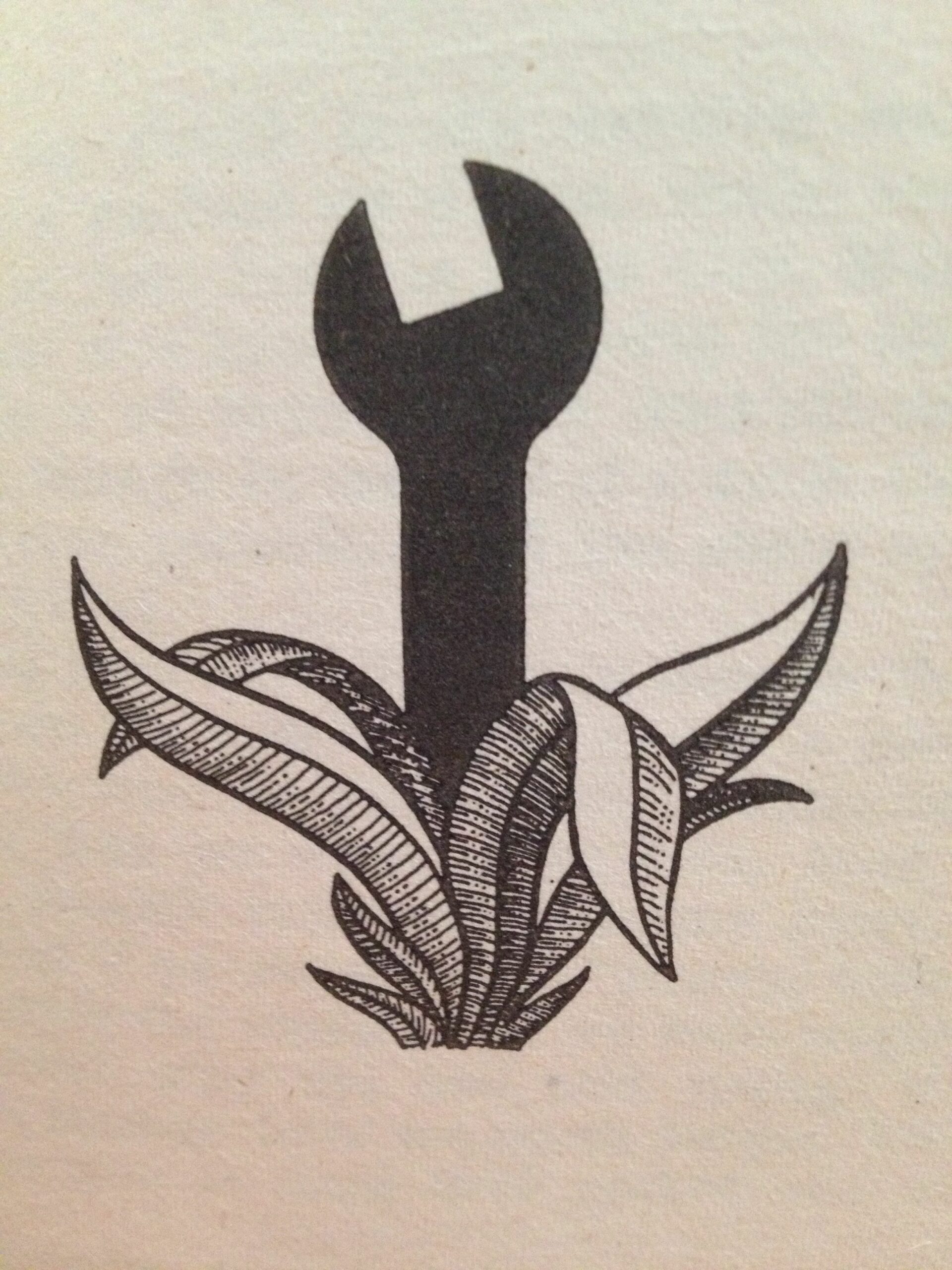
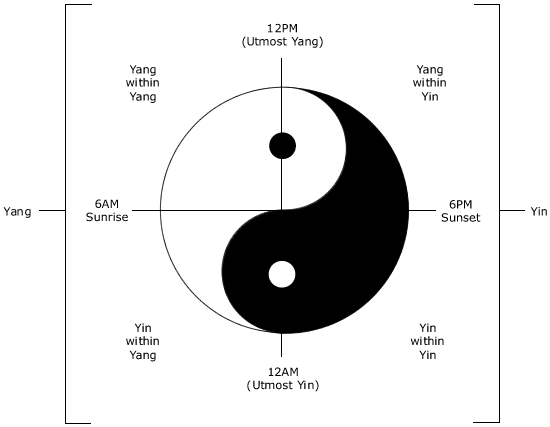
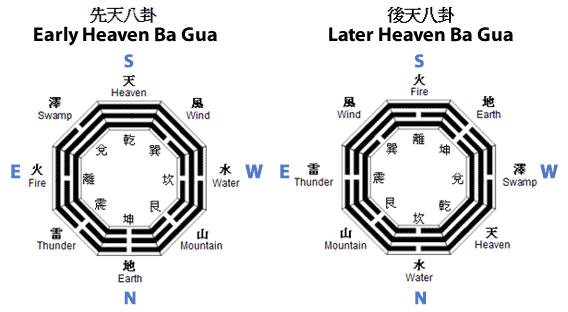
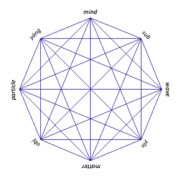
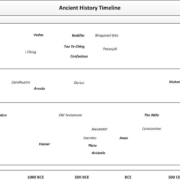
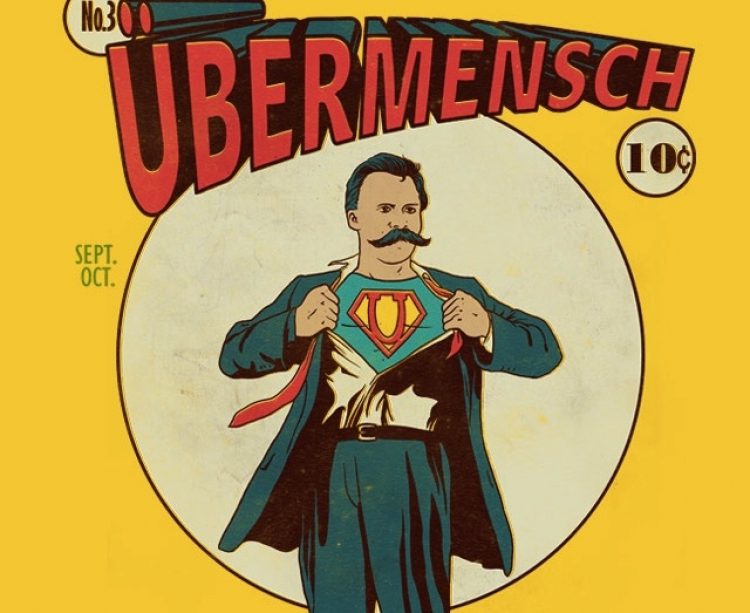


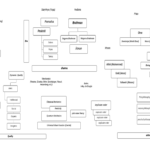
Leave a Reply
Want to join the discussion?Feel free to contribute!